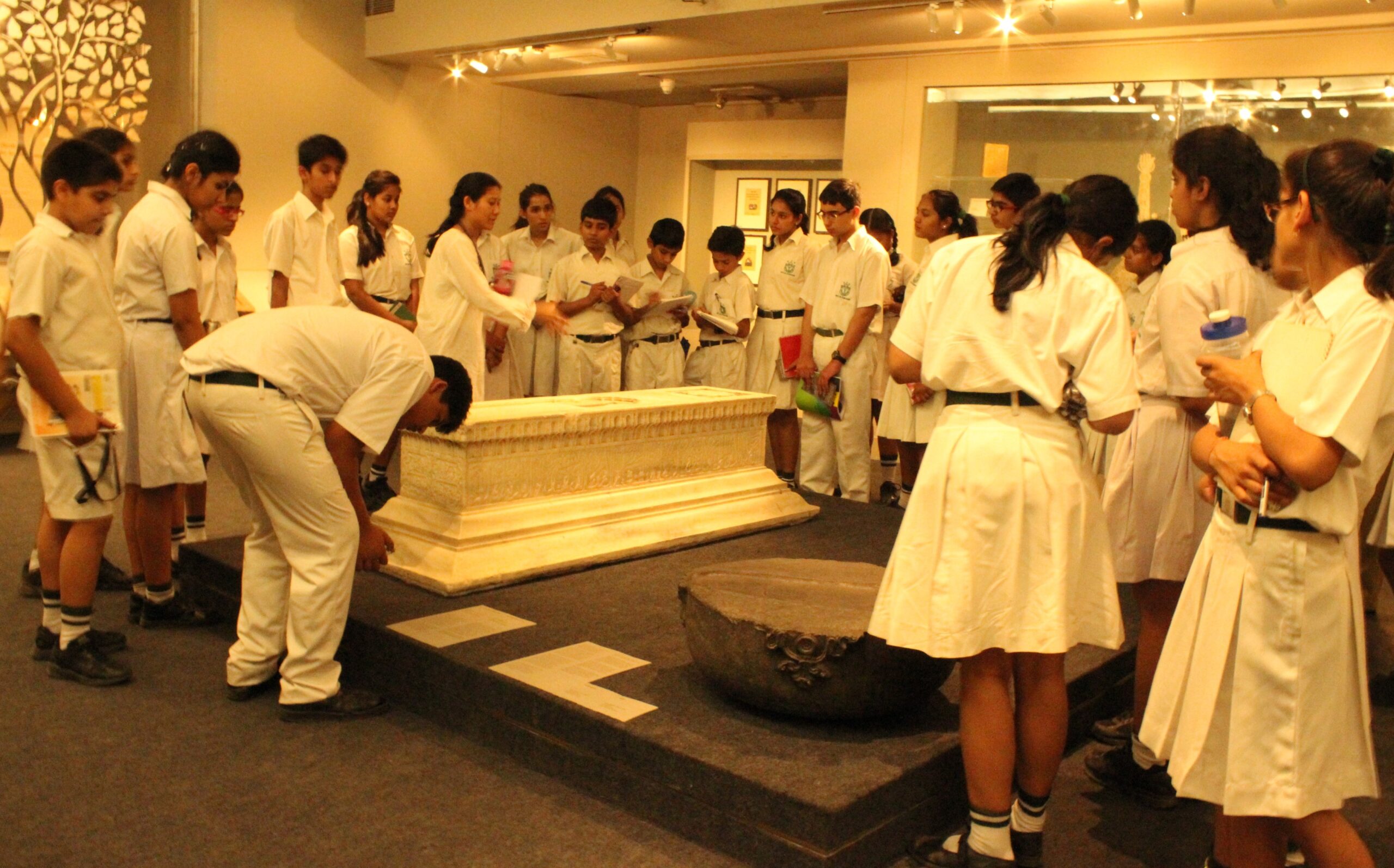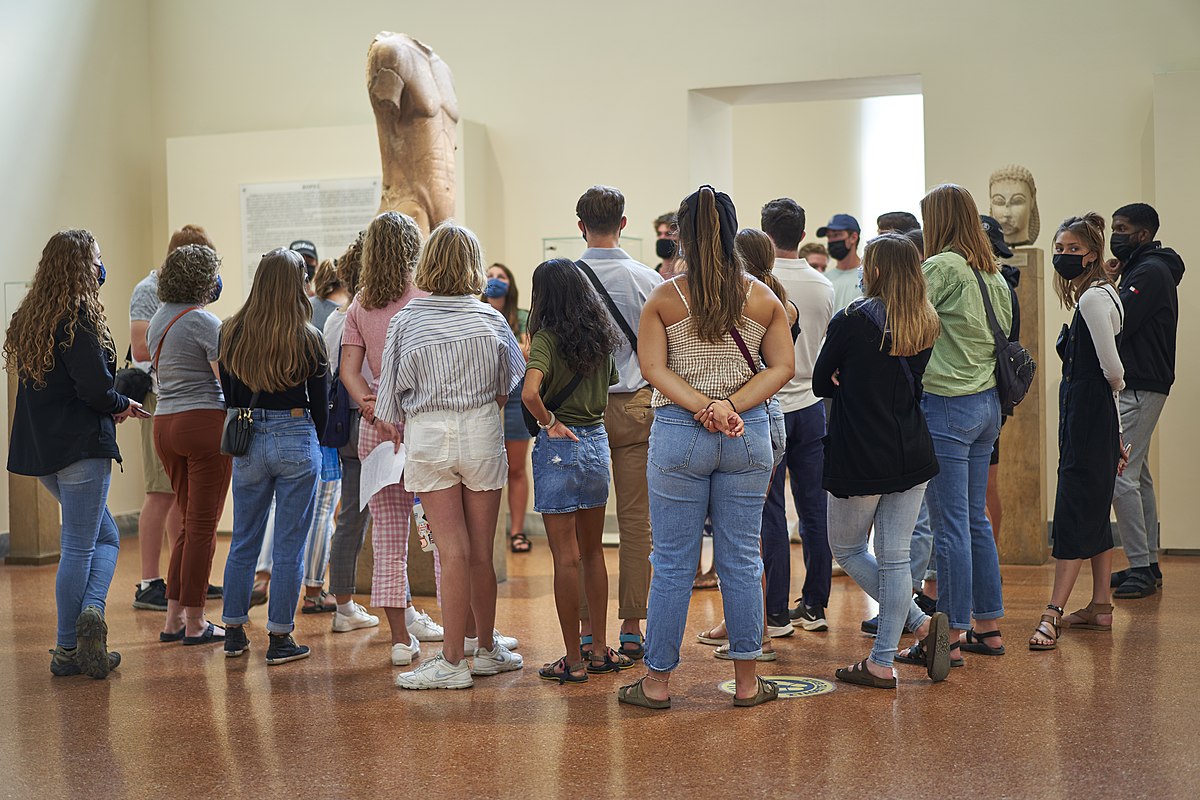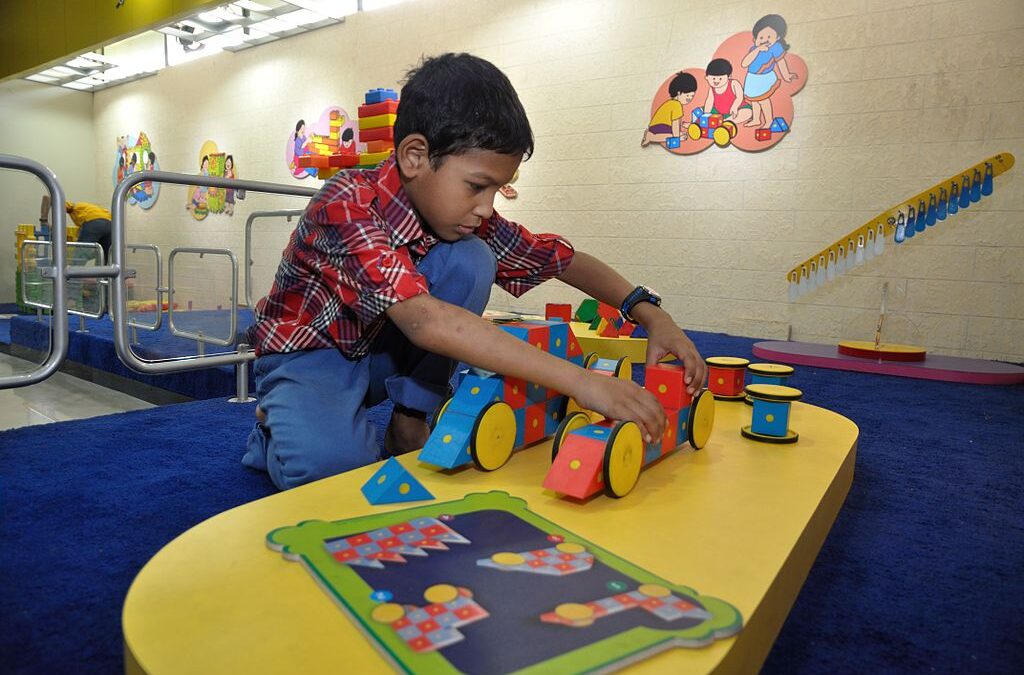Biswarup Ganguly, CC BY 3.0, via Wikimedia Commons
When was the last time you went to a museum and came back without learning at least one new fact? The answer is probably never. By definition, museums are all that is often said about them – “repositories of knowledge” or “buildings that hold objects of our past, our culture, or traditions” or “spaces that tell great stories of people”. This naturally makes them one of the most conducive spaces for learning, especially for school students, and yet museums in India continue to be highly underutilized for supporting classroom learning.
The National Education Policy (NEP) 2020 guidelines include goals asking to reduce emphasis from the class 10 and 12 boards in India, for which high ranks are often achieved through rote learning. NEP 2020 aims to make learning more holistic and offer opportunities of real-world application. Museums offer the perfect environment for this to happen. Museum education resources can be easily imagined as an extended teacher tool for enhancing classroom learning. Teachers, with support from museum educators, can expertly use the objects and spaces to induce their students into active and curious thinkers. Museums are also subject agnostic and interdisciplinary. A science museum can be just as enriching for a history class as an art museum can be for a science class. All it needs is some creative thinking on the part of the museum educator and the teacher and intentional liaising between them to create an impactful learning atmosphere. But what do museums offer to school students?

Nomu420, CC BY-SA 3.0, via Wikimedia Commons
Museums have the power to make knowledge visible through their objects and artefacts. These can be reinterpreted as diagrams or concepts from school textbooks come to life that students can relate to. Imagine students being able to refine their understanding of the scientific concept of evolution by engaging with a collection of birds’ beaks on display at a natural history museum; or being able to visualize abstract ideas such as historical timeline and contextualization when they observe objects from different civilizations at a history museum and interpret how tools, language, ideas developed simultaneously in different parts of the world.
Museums can also be excellent laboratories for active learning. Students can take charge of what and how they want to learn (more) about by actively engaging with the museum objects and artefacts, and transform their learning into an experience. Teachers in turn can facilitate this experience-building by creating learning scaffolds that align with the learning goals through activities such as role-play, think-pair-share, curating their own exhibition, writing biographies or identity charts, and mind mapping. This engagement often effortlessly leads to interdisciplinary learning as well, as museums offer opportunities to apply and interpret classroom concepts in different ways. Depending on the type of museum, students may find the need to critically think about a particular museum artefact by recalling concepts in science, math, social studies, geography, arts, languages etc.
Museums also cater to a range of intelligences. Research has shown that students interpret information using different capacities or intelligences; there is no one singular way of understanding. Museums with their range of collections and objects are an idyllic space for engaging with students of varying degrees of interests and abilities. Imagine a group of students viewing an exhibit on the Indus Valley civilization – some would read the labels with more interest than others, some might pay more attention to the shape, colour, design of vessels, jewellery, or tools on display, while others might learn most by connecting the dots analyzing and interpreting the entire collection. And it’s not only the variety of objects – museum educators can design a range of activities or games to pique the interests of all students, too, and further enhance their understanding of concepts learnt in classrooms.

George E. Koronaios, CC BY-SA 4.0, via Wikimedia Commons
Museums also become canvasses for students’ interpretation of their self and identity. The objects and artefacts in their collections, especially those that belong to the local community, tell the story of the place, including its people and the environment. Comparing and contrasting these objects and the stories they tell with their own lives often creates room for students to understand their culture, their past, and eventually their connection to the community in which they live.
However, it would be incomplete to make this assertion for using museums as extended classrooms without mentioning that Indian museums are in dire need for improvement and innovation. The quality of programs to engage and inspire students and young people is, at best, subpar compared to other international museums. India has a wide range of museums with fascinating collections of objects ranging from prehistoric archaeological finds to royal artefacts to ancient scripts. But in many of these, the display and content fails to ignite the imagination of visitors, especially the younger generation. Our local, public museums have tended to work in silos for many decades, and many of them do not even have a dedicated education department! But things are slowly beginning to change for the better. More recently, some Indian museums have been putting in the work to make their content more exciting and accessible, to name a few: the Mysore Rail Museum, the Orissa State Tribal Museum, the Partition Museum, and Science Gallery Bengaluru. Museums are also working to be more accessible and are keen to hear from their audiences, especially schools. Teachers should feel encouraged to reach out to their local museums and seek support to develop engaging and enriching educational experiences for their students using museum resources. It is easy to grow, improve, and create new products when the demand is there! But overall, Indian museums need funding as well as a strong vision for innovation and renovation that can uplift their educational programming (among other improvements).
Schools and museums coming together to make learning more holistic and accessible for students is a 2-way street. If schools can show more interest in museums beyond taking hundreds of students in a line-up kind of museum day, and museums can offer educational programming that goes well beyond the reading of labels and staring at the objects, students and young people can finally emerge as the ultimate winners.
This article was first published at K12 Digest
—————————————————————————————————-
Garima Sharma leads the education programming at ReReeti Foundation where she designs educational resources on history, heritage, and culture for school students, and conducts teacher professional development courses to help school teachers engage with museums more effectively. She is the facilitator of Museums – A Teacher’s Tool workshop that ReReeti continually organizes for school teachers.
ReReeti Foundation works to support and revitalise museums in India as places of learning, delight and meaningful engagement. Working under three verticals: Consulting, Capacity building and Education the Foundation works with museums, museum professionals and educationists to build strategic solutions that empower our partners to reach their maximum potential. ReReeti has worked and collaborated with leading museums across India including the Museum of Art and Photography, Indian Music Experience and others. More information can be found at www.rereeti.org








Recent Comments